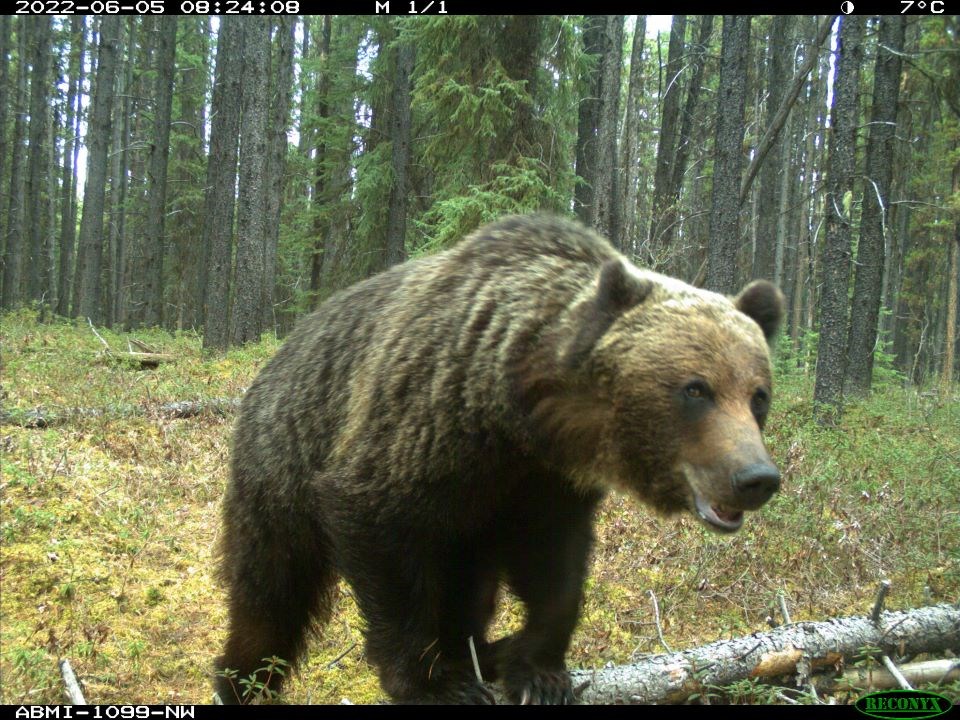The province is preparing to take its wildlife observation game to the next level by working toward a better strategy for co-ordinating with researchers.
An effort is underway to develop new resources and tools that will make it easier for wildlife experts to collaborate as they monitor bears, moose, cougars and other species from many kilometers away.
“Led by our Chief Scientist, we are helping researchers better understand how wildlife is behaving and responding to the world around them to help make sure that Alberta’s amazing wildlife continue to grow and thrive for future generations,” said Minister of Environment and Protected Areas Rebecca Schulz in a press release about Alberta’s dedication to wildlife conservation.
For many years, Alberta’s government has employed remote cameras to get better observations of wildlife in its natural habitat. The technology is cost-effective, efficient and safe, and it frequently enables researchers to observe multiple species at the same time.
Cameras can be set up in multiple deep woods locations and work non-stop in all kinds of weather, just as they do in Jasper National Park.
“We do an awful lot of work monitoring wildlife populations in Jasper, a lot of that through the wildlife monitoring camera network that we maintain in the landscape. We have close to 300 cameras across Jasper National Park,” said Dave Argument, resource conservation manager with Jasper National Park.
“It's proven over the years. Where we used to do a lot of wildlife work by direct observation: people in the field actually trying to count animals. You're only seeing the animals that you're not disturbing and chasing away when you go to the field. Those cameras stay on the landscape for the whole year, long after the biologist has left the scene. [They] are a really effective tool in actually getting a look at what's going on there even when people are not present.”
Remote wildlife cameras, sometimes known as camera traps, are important tools for the larger goal of wildlife conservation. Images obtained through this technology gives researchers a better understanding of wildlife populations and behaviours, which lead to improved ideas for supporting conservation.
The Alberta government and the Alberta Biodiversity Monitoring Institute (ABMI) have helped to install remote cameras across every sector of the province, allowing researchers to track more than 2,500 species from the northern boreal forest to the southern grasslands.
“Alberta collects a vast amount of data using remote wildlife cameras,” said University of Alberta professor Erin Bayne, who also serves as the ABMI’s co-director.
“The funds provided by the chief scientist’s office will help us develop analysis frameworks that make the work done by individual organizations more consistent, repeatable and transparent. It also will help us better approaches for sharing data that drastically improve our ability to measure and manage at broad scales the species and ecosystems that we treasure.”
In 2022, the Office of the Chief Scientist provided a $66,000 grant to help Alberta Environment and Protected Areas, ABMI and the University of Alberta develop new remote camera standards and best practice resources, along with training materials and wildlife monitoring tools.
Part of that work involved the Alberta government releasing new remote camera survey guidelines and standards to help improve research, data collection and reporting. That helped to improve researchers’ understanding of what images were being captured by remote cameras, which helped them to adjust the cameras to get the best pictures of wildlife conditions.
This year, another $70,000 in government funding will go towards the development of a new online tool. This will help researchers to design remote camera projects and then gather the data and analyze it. This new online tool will help streamline and co-ordinate wildlife monitoring projects and improve research as a result.
“The implications for data compatibility are huge: the more the standards are adopted by remote camera users, the larger the pool of data available to answer bigger and broader questions about wildlife,” said Corrina Copp, ABMI’s information centre director.
“The Alberta remote camera steering committee is now working to develop accessible tools to support all users, from new to experienced users, in designing remote camera projects, data analysis and modelling. This will help more people conduct effective wildlife camera research and monitoring while also increasing the amount of data available to all.”




